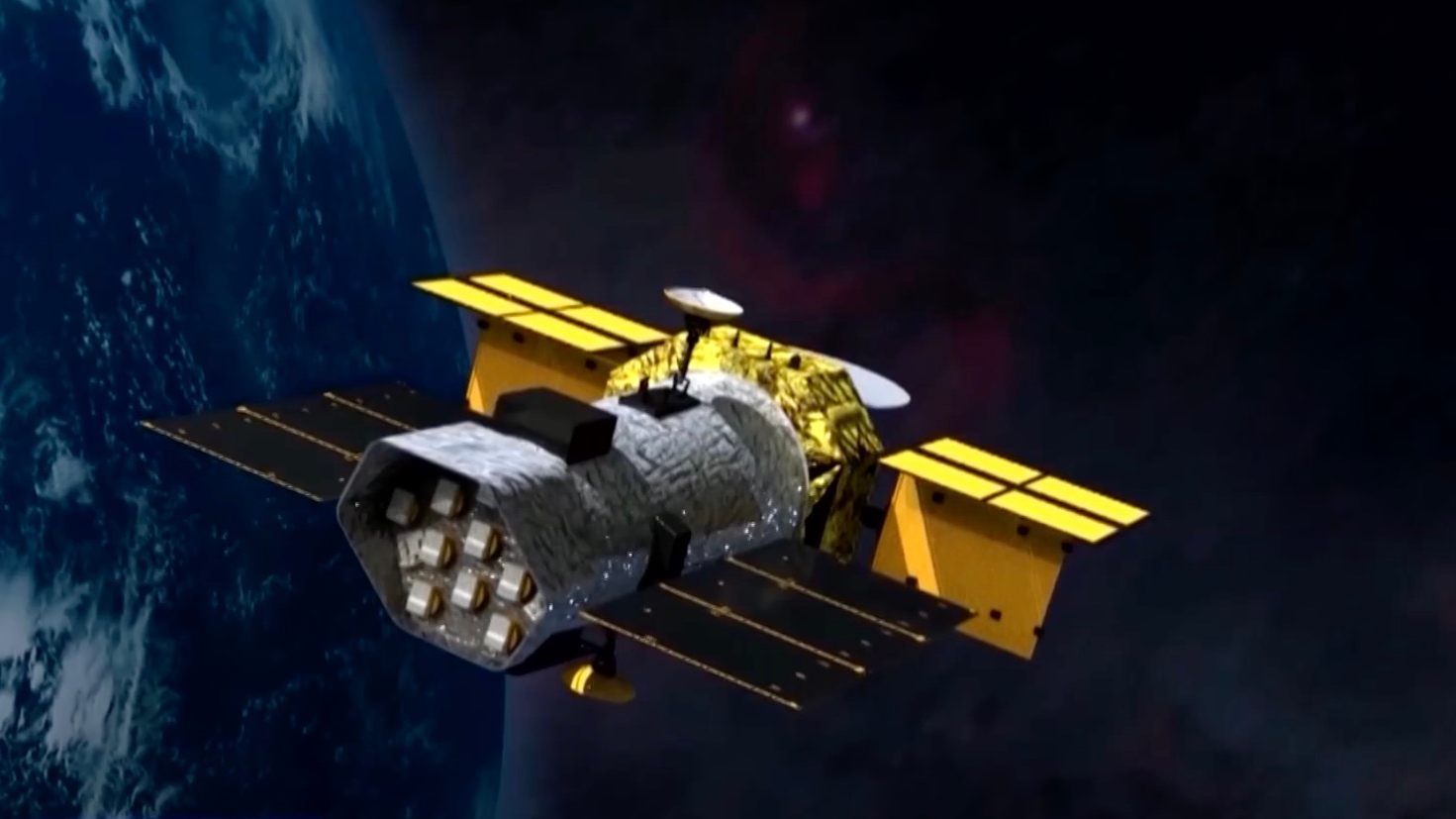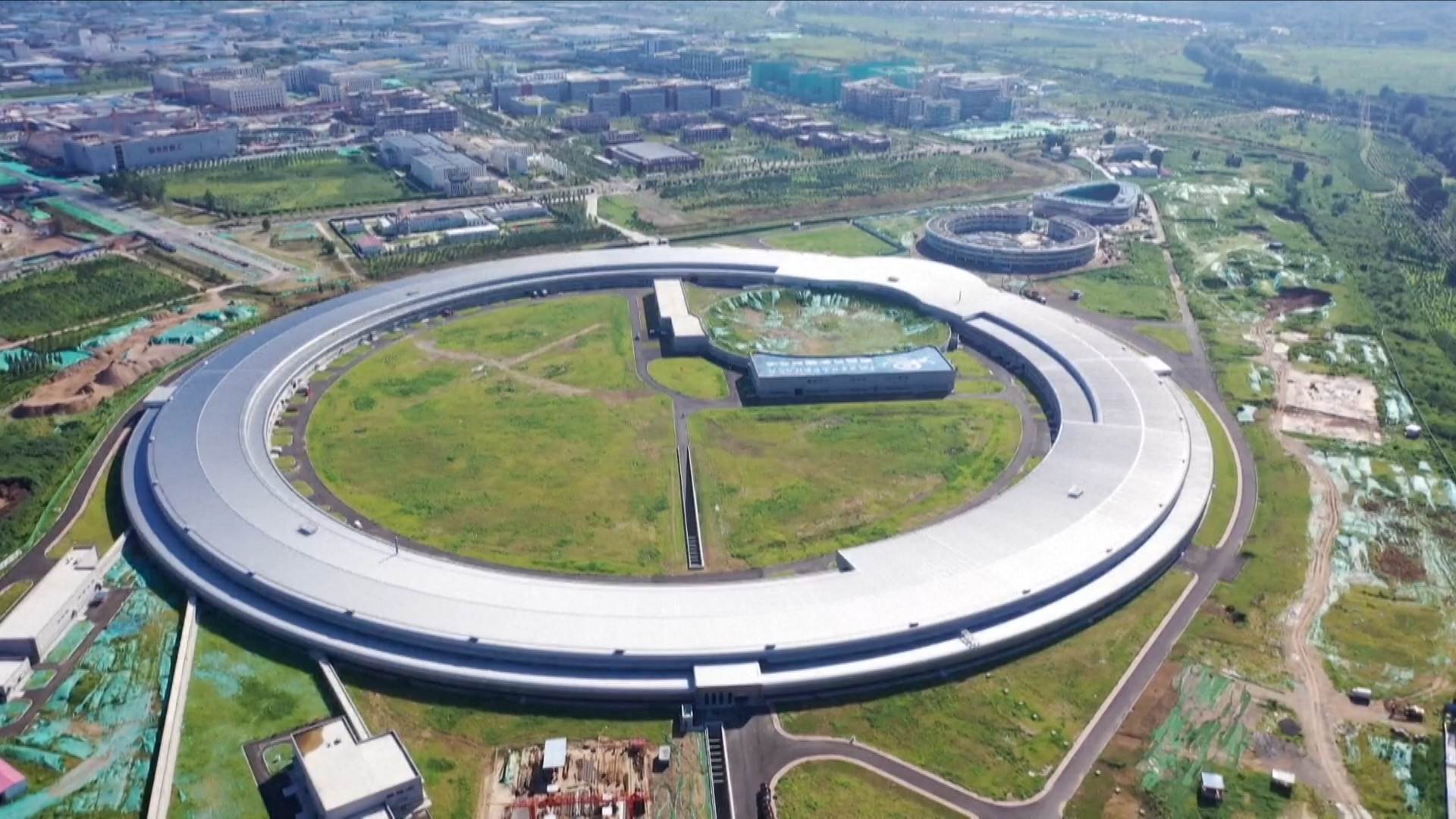
A schematic diagram of China's new generation space satellite of the enhanced X-ray Timing and Polarimetry mission (eXTP) project. /CMG
A schematic diagram of China's new generation space satellite of the enhanced X-ray Timing and Polarimetry mission (eXTP) project. /CMG
A series of key scientific research projects are steadily advancing in China, with some on track to serve the China Space Station (CSS), achieving technological breakthroughs and cutting-edge outcomes.
Wang Yifang, director of the Institute of High Energy Physics, Chinese Academy of Sciences (CAS), told China Media Group (CMG) Monday at a CAS scientific research symposium that China's new generation space satellite, the enhanced X-ray Timing and Polarimetry mission (eXTP) project, is progressing steadily.
Being a major international cooperative space science project initiated and led by Chinese scientists, the new satellite will be the successor of China's first space telescope, the Hard X-ray Modulation Telescope (HXMT) named "Huiyan," with detection capability expected to be 100 times greater than "Huiyan," Wang added.
01:16

Wang further said that another project, the linear accelerator of China's high-energy synchrotron radiation light source, is expected to be launched around 2027 to serve the CSS.
The light source, the High Energy Photon Source (HEPS), is a major science infrastructure project in China built by the Institute of High Energy Physics under the CAS.
The construction started in June 2019 and is expected to be put into operation in 2025. Upon completion, it will be China's first high-energy synchrotron radiation source and one of the brightest fourth-generation synchrotron radiation sources in the world.
In addition, the second phase of construction of the spallation neutron source (SNS) in south China’s Guangdong is currently under planning and is expected to start construction within this year.
These high-end devices have provided the most advanced means for scientific research in other fields such as condensed matter, materials, geology and the environment to lay solid foundations for important and leading inventions and discoveries, said Wang.